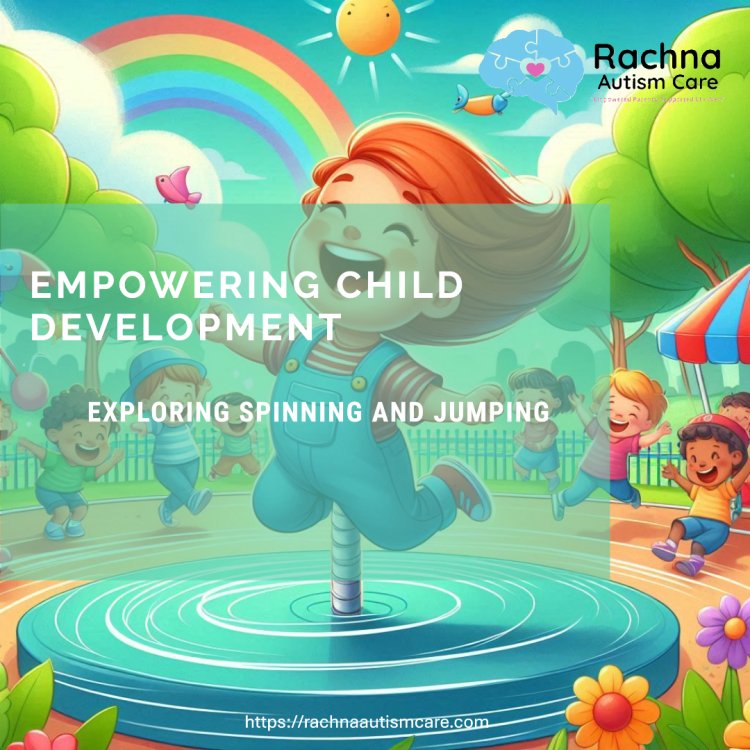Humming in Autistic Children: Concerns & How to Help
Learn why a humming autistic child hums, when to be concerned, and how to help. Explore expert autism care in Bangalore for tailored support and therapies.

Humming in Autistic Children: When to Be Concerned & How to Help
Humming is one of the most common behaviors in autistic children, and it is usually considered a type of self-stimulatory behavior or "stimming." It can be an emotion regulation or sensory input regulation tool for the child, but excessive or disruptive humming may call for intervention. Knowing why an autistic child hums and when to seek help can guide parents and caregivers to give the child appropriate guidance.
This group offers the help of specialized programs to autistic children in managing their sensory needs as they learn vital communication and social skills. Looking for professional support? Then consider Autism Care in Bangalore.
Why Do Autistic Children Hum?
Humming in autistic children has several purposes. They might do it to cope, regulate sensory stimulation, or express themselves emotionally. Here are some of the common reasons for humming by an autistic child:
1. Regulation for Sensory Input:
Most autistic children process sensory inputs differently. Humming helps them regulate sensory input, providing comfort and focus when stimuli overwhelm them.
2. Self-Soothing and Anxiety Management
Just like how some people bite their nails or fidget when nervous, autistic children may hum to calm themselves in stressful or unfamiliar environments.
3. Expression of Happiness or Excitement
A humming autistic child may express joy, excitement, or contentment through humming, especially when engaged in an enjoyable activity.
4. Communication Difficulties
Children who struggle with verbal communication might use humming as an alternative way to express their thoughts and emotions.
When Should Parents Be Worried About the Humming of Their Autistic Children?
Humming is generally innocuous, but at other times, it can have underlying challenging implications that need attention. Here are some signs indicating whether humming may need intervention:
1. Excessive Humming That Interferes with Daily Life
If a child's humming prevents them from focusing on school, interacting with peers, or participating in everyday activities, it might be an implication that requires intervention.
2. Humming Accompanied by Distress
If a child hums excessively when anxious, frustrated, or overwhelmed, it may be a sign that they need additional coping strategies.
3. Sudden Increase in Humming Behavior
A noticeable increase in humming might indicate heightened stress, sensory overload, or medical conditions such as ear infections or hearing issues.
4. Disruptive Humming in Social Settings
Parents and caregivers may need to teach alternative communication methods if a child's humming disrupts conversations or social interactions.
How to Support a Humming Autistic Child
There are various ways of supporting a humming autistic child about their needs and sensory preferences.
1. Identify Triggers and Patterns
Observe when and where the child hums the most. If humming occurs in response to stress, sensory overload, or boredom, addressing these triggers can help reduce excessive humming.
2. Provide Alternative Sensory Activities
Activities such as fidgeting with toys, deep breathing exercises, or listening to soothing music can assist an autistic child to regulate his or her needs differently.
3. Encourage Social Awareness
Let the child learn what kind of settings are okay for humming. For example, it may be okay at home but will have to be controlled in a classroom setting.
4. Use Positive Reinforcement
Praise and reward the child for the successful use of alternative coping strategies or management of humming in social situations.
5. Professional Counseling
If humming has a strong impact on the daily life of a child, then professional counseling is advisable. Autism Care in Bangalore offers professional assessments and therapy programs designed to help autistic children develop effective communication and sensory management strategies.
How Autism Care in Bangalore Can Help
Autism Care in Bangalore offers various therapies and services designed to help the child with autistic spectrum disorder address sensory processing issues and communication issues. The different types of therapies are as follows:
1. Occupational Therapy
Helps the child develop the ability to process senses and to look for other alternatives to regulate self.
2. Speech and Language Therapy
It helps to communicate through the proper strategy to reduce humming to some extent.
3. Behavioral Therapy
Teaches social skills, emotional regulation, and coping mechanisms that support the development of a child.
4. Parent Training and Support Groups
Empowers parents with skills and knowledge on how to effectively handle their child's sensory needs in the home environment and within society.
Conclusion
Humming is a natural behavior for autistic children, sometimes even beneficial, as it may help them modulate their emotional states and sensory input. Of course, when humming increases, becomes a disturbance, or perceives distress, parents should seek intervention strategies. Parenting an autistic child who hums might only require support from services like Autism Care in Bangalore to identify why a child is humming so that assistance can be rendered while actively promoting the best progress of such a child.
If you’re looking for expert guidance, reach out to Autism Care in Bangalore for assessments, therapy options, and personalized support for your child’s development.
What's Your Reaction?
















